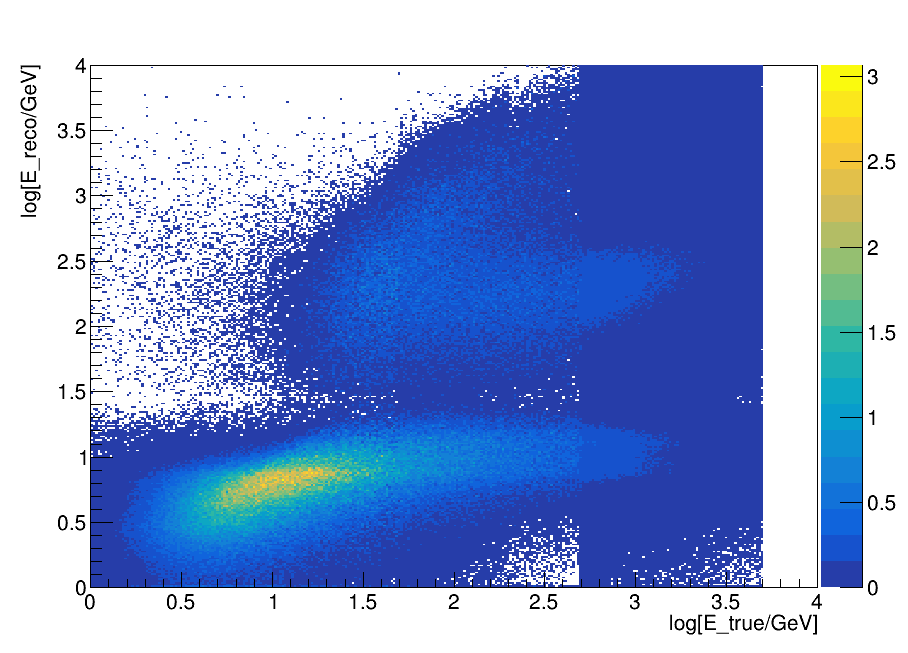KM3NeT/ORCA Reconstruction Studies
An investigation into energy reconstruction biases for muon neutrinos in the ORCA6 detector. Identified track geometry relative to the sparse detector array as the primary cause of systematic energy miscalibrations.
Overview
This undergraduate internship project within the KM3NeT Collaboration focused on performance studies for the ORCA (Oscillation Research with Cosmics in the Abyss) neutrino detector. The core objective was to investigate challenges in reconstructing the energy of muon neutrinos using data from an early six-string prototype detector configuration (ORCA6). The work involved analyzing Monte Carlo simulations to diagnose a known issue with energy resolution and identify the underlying causes.
The Challenge
ORCA’s goal is to determine the neutrino mass hierarchy by measuring oscillations of atmospheric neutrinos. Precise energy reconstruction is critical for this measurement.
Initial analysis revealed a significant problem: in a specific energy range (the “deep” region ~35–80 GeV), the reconstruction algorithm systematically estimated neutrino energies to be much lower than their true values. This project aimed to uncover which event characteristics were causing this bias, especially given the limited size of the ORCA6 detector.

Methodology
The analysis was conducted using the ROOT data analysis framework and a custom C++ analysis module (analyze_orca6_data.cc). The approach was:
- Data Processing: Analyze Monte Carlo simulated neutrino events for the ORCA6 configuration, where the true energy is known.
- Variable Correlation: Study the distribution of key topological variables for events in the “deep” region, comparing three subsets:
- 🔵 Events reconstructed with lower energy.
- 🟢 Events reconstructed with correct energy.
- 🔴 Events reconstructed with higher energy.
- Key Variables: The study investigated:
- Reconstructed vertex position (
reco_vrtx_z,reco_vrtx_r) - Bjorken-y (inelasticity parameter)
- Track length
- Number of detected hits (
Nhits) - Distance of closest approach (
d_closest,z_closest) of the track to the detector center.
- Reconstructed vertex position (
- Event Visualization: Configured and used an Event Display tool to visually inspect individual events and correlate their geometry with reconstruction quality.
Key Findings
The analysis identified a strong and clear correlation:
- 🎯 Primary Cause: The accuracy of the energy reconstruction is highly dependent on the track’s proximity to the detector center.
- Events with a small distance of closest approach (
d_closest < 30 m) were often reconstructed with too little energy. - Events with a large distance of closest approach (
d_closest > 50 m), skimming the detector’s edge, were consistently reconstructed with too much energy. The algorithm overestimates energy when it only detects a short, bright segment of a longer track.
- Events with a small distance of closest approach (
- Ruled Out Factors: Variables like the vertex position, Bjorken-y, and zenith angle showed no significant correlation with the reconstruction inaccuracy.
- Conclusion: The limited geometric size of the ORCA6 detector is the dominant factor causing the observed biases in energy resolution. The reconstruction performance is intrinsically linked to the muon track’s trajectory through the sparse detector array.
Significance & Outcome
This study provided crucial insights into the performance limits of the KM3NeT/ORCA detector during its construction phase. The results are valuable for:
- Algorithm Validation: Providing a benchmark for understanding and improving energy reconstruction software.
- Systematic Uncertainty Analysis: Informing the estimates of systematic errors for ORCA’s first physics results.
- Future Projections: Establishing a baseline understanding of performance issues that are expected to diminish as the detector is completed to its full 115-string design.
The project also provided extensive hands-on experience with modern high-energy physics data analysis tools and neutrino detector principles.